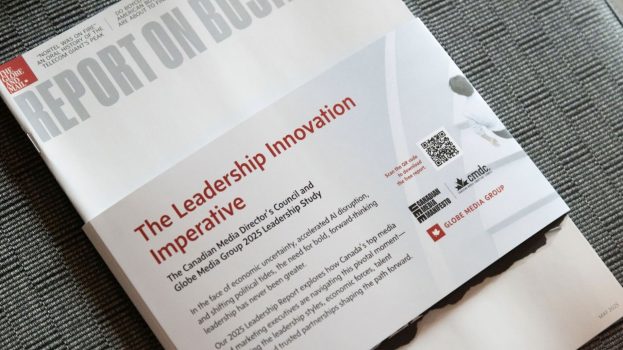During a virtual Dx3 event last week, Dr. Augustine Fou – a former marketer-turned-ad fraud investigator and consultant – implored marketers with large digital budgets to rethink how and where they invest those dollars.
“A lot of brands are literally overspending in digital, because they believe that because they’re getting so many billions of ad impressions and so many clicks that it’s actually working,” Fou said in an interview with Lorne Solway, president of the Response Marketing Association. “But they haven’t taken into account the possibility of fraud, which is that the banner ads are being shown to bots and not to humans. If your ad is being shown to bots, you’re not going to do any brand-building at all.”
Ad fraud has been an issue for many years, though it’s one that few marketers have fully grasped or been able to fight against, according to the presentation. In fact, Fou believes the scale of ad fraud across the industry is currently at its “highest point ever,” which he admits is a statement at odds with what most marketers are told and believe.
Often, marketers are told fraud detection technologies are a sufficient safeguard against illicit activity, keeping ad fraud in check at levels of less than 1%. However, from his experience, Fou believes the negative actors behind the bots can easily circumvent detection, meaning fraud is still costing brands much greater amounts in wasted investment.
How did this become such a big issue?
As Fou sees it, many factors have contributed to the proliferation of the problem. But briefly explained, the threat to brands became much larger in the early 2010s, with the rise of programmatic ad exchanges and real-time, automated bidding allowing marketers to buy inventory from a single vendor regrouping hundreds if not thousands of niche websites – as opposed to negotiating prices with each one on their own.
Fou contends that bots – software programs designed to load fake webpages or click on ads on those pages to inflate performance metrics – have been able to infiltrate in the new automated environment. “Because [the process] is now completely automated with no human intervention, it’s also created more opportunity for fraud,” he said.
The blame is shared across nearly all participants in the digital ad ecosystem, including marketers, he said. “The way to think about this is ad fraud is not a technology problem. Ad fraud is an incentive problem.”
According to Fou, too many brand leaders are chasing “vanity metrics,” such as total clicks and ad impressions – as they look for greater reach and frequency – without paying sufficient heed to those investments’ impact on business outcomes.
In turn, their focus on buying larger quantities of ads at cheaper prices has translated to greater fraud throughout the supply chain, Fou explained. Brands’ media agencies are told to secure a certain number of impressions, he added, or to spend a certain amount of money in digital or programmatic, and so they eventually turn to the ad exchanges, which are eager to list as many websites as possible to help generate traffic.
Unlike in TV, print and other traditional mediums – where the audience and inventory are finite – the digital world offers the sense that inventory and ad impressions are “unlimited,” said Fou, with the understanding that some ads will be placed on very niche websites. So the agencies invest brands’ total budgets, earning a cut of the profits, indirectly fuelling marketers’ growing digital investments – and, for Fou, the ad fraud problem.
What can marketers do?
During the event, Fou spoke at length about the evolution of the digital ad ecosystem, the various forms ad fraud can take and who profits. He also shared advice on how marketers can protect their brand investments.
First, he urged marketers to run their own tests and to correlate their digital investments with business outcomes. “Don’t take my word for it,” he said. “Really just look at your own campaign, because some campaigns are well managed, so there will be relatively low fraud, other campaigns are not closely managed, and they will be subject to a lot more.”
If a campaign has earned exceptionally high click-through rates, for example, it’s worth asking whether that has had an impact on sales. If not, there may be reason to suspect the investments are being wasted on bots, Fou said.
Oftentimes, the best way to know for sure is to pull back on spend, and see what happens. Proactively or in response to circumstances outside of their control, there’s a growing list of U.S.-based brands that have done this in recent years, with surprising results.
When P&G reduced its digital ad spend by $200 million (by both cutting how much it spent on media and consolidating its media agencies), it saw no change in business outcomes. And when American bank Chase cut the number of sites carrying its ads from 400,000 to 5,000 sites – a 99% reduction – it measured little impact on the business. More recently, Airbnb turned off $800 million in digital media spend in response to the pandemic and still earned 95% of the traffic it got in 2019. The company now plans to redirect part of that investment into branding and PR.
Beyond testing and learning, Fou suggested there are practical things marketers can do, such as asking for detailed reports on which sites and mobile apps carry their ads. “They usually get a rolled up report at the end of the month from their agency that says you bought this many billions of impressions and you got this many clicks and you spent this much,” he said. “They don’t get the granular detail of where the ads show up.”
In addition to helping brands identify if their dollars are being spent on bots, detailed breakdowns provide visibility into whether their ads are inadvertently supporting fake news, COVID disinformation, or other brand safety issues.
Finally, Fou said marketers should consider taking an include-list approach to their buys, as opposed to building block-lists or exclude-lists, because there are “millions upon millions of fake sites out there.” Should the hypothetical website fakesite123.com be discovered as fraudulent, the actors behind it can easily create fakesite1234.com, and so forth.
“It’s an endless game of whack-a-mole to try to keep adding to a block list to try to prevent that, whereas there’s only a finite number of sites that you can think of that humans would visit regularly in large quantities,” he said.

























